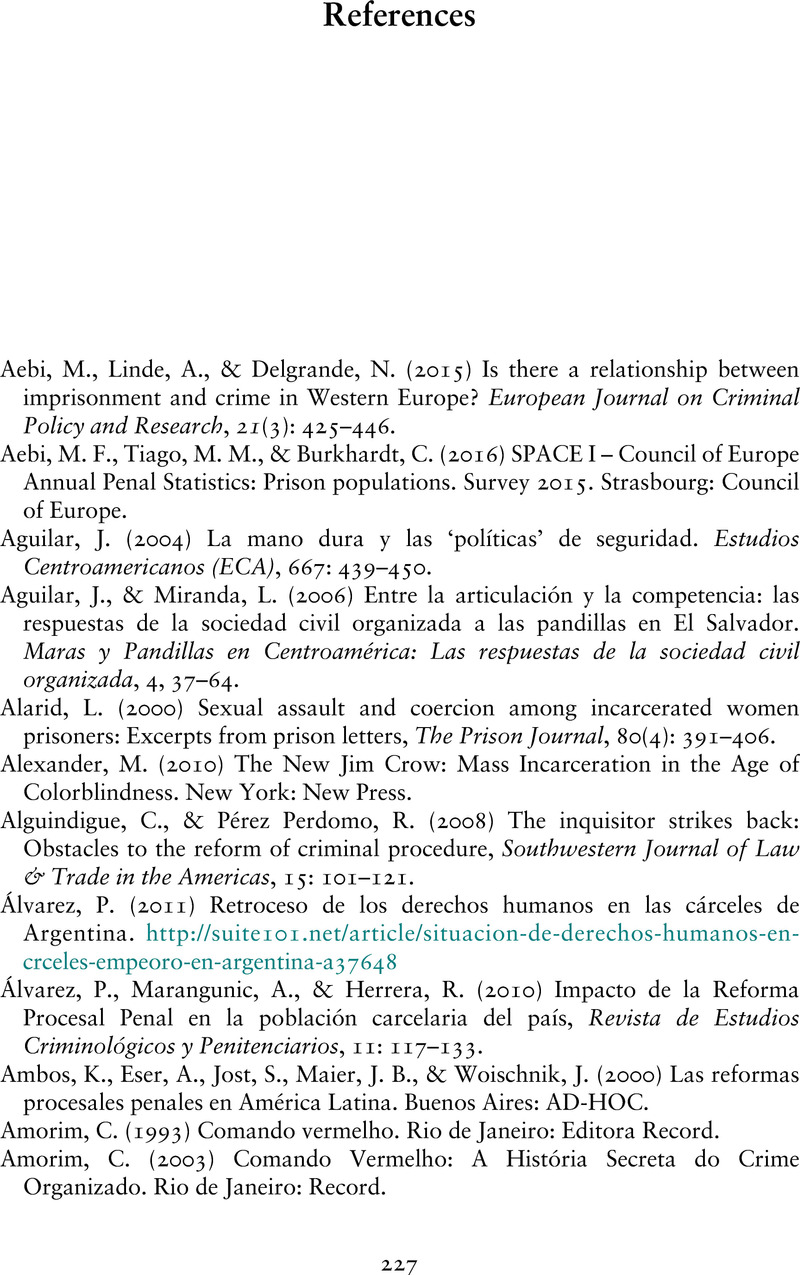Book contents
- Prisons and Crime in Latin America
- Prisons and Crime in Latin America
- Copyright page
- Contents
- Tables
- Figures
- Preface: COVID-19 and Prisons in Latin America
- Acknowledgments
- 1 Introduction
- 2 The Prison Explosion in Latin America
- 3 Explaining Prison Growth
- 4 Drugs and Prisons
- 5 Female Imprisonment and Violence in Latin America
- 6 Justice Institutions in Latin America: The “Arrest and Convict” Machine
- 7 Life in Prison
- 8 Hobbes in Prison: Violence and Prison Governance in Latin America
- 9 Prison and the Outside World: The Fallacy of Separation
- 10 Conclusions: Corrections and Criminal Policy
- Appendix Methodological Notes on Surveys
- References
- Index
- References
References
Published online by Cambridge University Press: 19 February 2021
- Prisons and Crime in Latin America
- Prisons and Crime in Latin America
- Copyright page
- Contents
- Tables
- Figures
- Preface: COVID-19 and Prisons in Latin America
- Acknowledgments
- 1 Introduction
- 2 The Prison Explosion in Latin America
- 3 Explaining Prison Growth
- 4 Drugs and Prisons
- 5 Female Imprisonment and Violence in Latin America
- 6 Justice Institutions in Latin America: The “Arrest and Convict” Machine
- 7 Life in Prison
- 8 Hobbes in Prison: Violence and Prison Governance in Latin America
- 9 Prison and the Outside World: The Fallacy of Separation
- 10 Conclusions: Corrections and Criminal Policy
- Appendix Methodological Notes on Surveys
- References
- Index
- References
Summary

- Type
- Chapter
- Information
- Prisons and Crime in Latin America , pp. 227 - 252Publisher: Cambridge University PressPrint publication year: 2021

